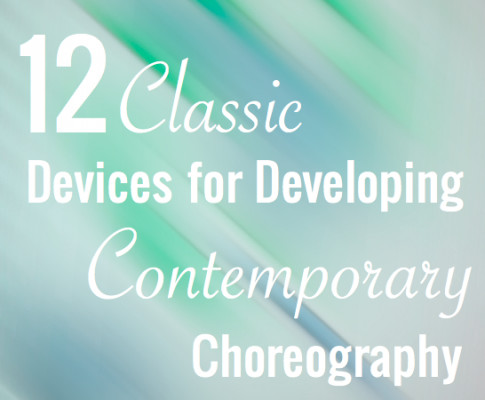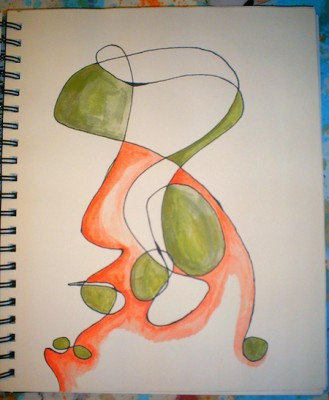Contemporary dance choreography can sometimes feel derivative, lacking a unique voice. Many choreographers, even seasoned ones, might find themselves echoing the styles of those they admire, struggling to discover their own original movement language. This was the challenge faced by Melanie Doskocil, a frequent contributor to Dance Advantage, who sought a fresh approach for her advanced dance students’ annual recital. Instead of arriving with pre-set steps, she decided to experiment with choreographic “games”—structured exercises designed to spark creativity and student ownership in the dance-making process. The results were transformative, leading to a piece that was not only original and engaging for the students but also deeply appreciated by the organization’s leadership.
Inspired by this success, Melanie Doskocil and her colleague, Modern dance expert Adrianna Thompson, brainstormed a collection of classic choreographic devices, or “games,” perfect for injecting fresh energy into contemporary choreography. These games, reminiscent of exercises they themselves encountered as dance students, offer a playful yet structured way to develop movement material collaboratively with dancers. Whether you’re seeking to overcome choreographic blocks or simply want to foster a more creative and collaborative environment in your dance classes, these games are invaluable tools. Explore these twelve engaging games to unlock new movement possibilities and revitalize your choreographic process, making dance creation a fun and exploratory journey for both you and your students.
 12 Classic Devices For Developing Contemporary Choreography
12 Classic Devices For Developing Contemporary Choreography
These choreographic games are drawn from the collective memory of Melanie and Adrianna, inspired by various influential teachers throughout their dance education. While the specific origins of each game may be lost to time, they gratefully acknowledge the profound impact of educators like Eiko and Koma, Viola Faber, Margaret Jenkins, Robert Johnson, Alonzo King, Mark Morris, Daniel Nagrin, Anna Sokolow, Jeff Slayton, and Elizabeth Streb, among others, for fostering their creative spirits and passing on these invaluable pedagogical tools.
Choreographic Games to Ignite Creativity in Dance
Here are twelve classic choreographic games, perfect for sparking creativity and collaboration in your dance classes:
1. First Dance Game: Exploring Movement Origins
This game is an excellent icebreaker, especially when working with new students. Begin by asking each student to recall their very first dance style. Then, instruct them to create a step or short movement phrase that embodies the essence of that initial dance form. This exercise not only introduces students to each other’s dance backgrounds but also taps into diverse movement vocabularies, creating a rich starting point for choreography.
2. Name Game: Body and Space Awareness
The Name Game is a fun way to explore body awareness and spatial dynamics. Start by asking students to “write” their name in the air using a designated body part, such as their nose or elbow. Progress by having them use their non-dominant hand, challenging their coordination. Further variations include changing the scale of the writing – from small, contained movements to expansive, room-filling gestures. Experiment with different levels, from standing to sitting or lying down, and explore writing on different planes (horizontal, vertical, diagonal). This game encourages students to think about how movement can be expressed through different body parts and in various spatial contexts.
3. Gesture Game: Universal and Specific Communication
The Gesture Game explores the power of non-verbal communication through movement.
Part A: Universal Gestures
Begin by discussing the concept of universal gestures – movements that transcend language barriers. Pose a scenario, such as being stranded on an alien planet, and ask students how they would communicate basic needs using only gestures. Have each student demonstrate a gesture they believe would be universally understood. This part of the game highlights the inherent communicative power of gesture in dance and movement.
Part B: Contextual Gestures
Shift the focus to context-specific gestures. Choose a common activity familiar to all students, such as being in a classroom, waiting in line, or commuting. Ask each student to identify four common gestures associated with that activity. For example, in a classroom, gestures might include raising a hand, taking notes, or looking at a watch. Have students string these four gestures together into a short movement phrase. Encourage them to exaggerate these gestures, making them larger and more expressive. Pair students and have them teach their movement phrases to each other. Finally, combine the two phrases, exploring how different gesture-based phrases can be juxtaposed and integrated. This exercise encourages observation of everyday movements and their transformation into choreographic material.
4. Adjective Game: Infusing Movement with Emotion and Intention
The Adjective Game is designed to explore how intention and emotion can be conveyed through movement. Before the session, prepare a short movement phrase (8-32 counts) and write a list of adjectives (e.g., hot, tired, excited, blue, tenacious) on slips of paper. Teach students the base movement phrase. Then, have each student draw an adjective. Individually, they must perform the movement phrase while embodying the drawn adjective. The other students try to guess the adjective being portrayed. This game helps dancers understand how subtle shifts in dynamics, energy, and focus can dramatically alter the meaning and impact of a movement phrase.
5. Props Games: Unlocking Creativity with Objects
Props can be fantastic catalysts for movement invention. Here are two engaging prop-based games:
 The contents of a dance bag
The contents of a dance bag
Game 1: The Dance Bag Surprise
Ask students to bring their dance bags to class. Have them explore the contents of their bags and select one item. Using this item as inspiration – its shape, texture, function, or any associations it evokes – students create a short movement phrase. This game encourages resourcefulness and finding choreographic inspiration in unexpected everyday objects.
Game 2: The Mystery Bag
The choreographer prepares a bag filled with diverse, intriguing items. These could include everyday objects like cards, lip balm, candles, snack bars, postcards, or unique trinkets. Items with writing or interesting textures are particularly effective. Each student draws an item from the bag and creates a movement phrase inspired by it. There are no limitations – students can draw inspiration from the item’s physical properties, its symbolic meaning, associated words, or even its smell. This game fosters imaginative thinking and encourages students to find movement potential in abstract or unconventional stimuli.
6. Parameters Game: Structured Choreographic Challenges
The Parameters Game provides a framework for structured improvisation and phrase creation. Give students a set of specific parameters or constraints for creating a 16-count phrase. Examples of parameters could include:
- Start with a classical ballet waltz turn (arms optional).
- Incorporate at least one turn (pirouette, pique turn, spin, etc.).
- Include a change in level from standing to floor and back to standing.
- Integrate at least one non-classical movement and one classical movement.
These parameters provide a clear structure while still allowing for individual creativity within the set boundaries. This game is excellent for developing technical versatility and problem-solving skills within a choreographic context.
7. Phrasing Games: Manipulating Movement Sequences
Phrasing games focus on manipulating existing movement material to create new variations and expand choreographic possibilities.
Retrograde Exploration:
Once a phrase has been created (either by the teacher or students), retrograde is a powerful tool for creative development. Challenge students to perform the phrase in reverse, not just by changing the order of steps, but by “rewinding” each movement as if playing a video in reverse. This technique reveals new pathways and dynamics within the original phrase, fostering a deeper understanding of movement construction.
Combinatorial Phrasing:
Teach students a small vocabulary of 4-5 simple movements, labeled A, B, C, D, etc. Then, experiment with different combinations and sequences of these movements. Examples include ABA, CDC, ABCDDCBA, or more complex patterns. As students become comfortable, these simple movements can evolve into longer phrases, and the phrases themselves can be combined into larger choreographic sections (e.g., ABA, CDC structure). This game emphasizes the building blocks of choreography and how simple elements can be combined to create complex structures.
8. Alternate Facing Game: Perspective and Spatial Awareness
The Alternate Facing Game highlights how perspective and orientation dramatically impact movement perception. Create a short 8-16 count phrase. Have students perform it facing the front. Then, ask them to repeat the phrase while facing the back, then each side. Discuss how the phrase appears different from each vantage point.
Extend this concept by asking students to imagine the floor as transparent glass, with the audience positioned below. How would they adapt their movement to be visually engaging from this unusual perspective? This game encourages students to think three-dimensionally about space and consider how movement communicates from multiple viewpoints.
9. Follow the Leader Game: Group Dynamics and Spontaneous Choreography
 A school of barracuda follow the leader
A school of barracuda follow the leader
Follow the Leader, adapted for dance, becomes a dynamic exercise in group improvisation and spontaneous choreography. Instead of a traditional line, have students form a loose cluster. Designate a leader at the front of the group. The leader initiates movement phrases (set a time limit to encourage concise phrases). As the movement shifts direction, the person now at the front becomes the new leader. The teacher can initially call out the new leader’s name, but encourage students to organically identify and transition leadership within the group. Experiment with allowing multiple leaders to emerge, creating more complex and layered group movement. This game develops quick thinking, adaptability, and group awareness in movement.
10. Sleep Game: Slow Motion Exploration and Spatial Interaction
The Sleep Game is a spatial awareness exercise that fosters slow, deliberate movement and mindful interaction with others. Have students lie down on one side of the room, imagining a dreamlike, sleep-conscious state. With eyes closed, they slowly begin to move across the floor towards the opposite side, maintaining an ultra-slow, trance-like quality. Students can slither, roll, or rise to standing, but the movement must remain slow and dreamlike throughout. The challenge lies in navigating the space and interacting with other moving “sleepwalkers” and obstacles while maintaining this slow, deliberate quality and keeping their eyes closed. This game cultivates kinesthetic awareness, spatial sensitivity, and non-verbal communication in movement.
 Pencil line drawing by Shangri-LaPencil line drawing by Shangri-La
Pencil line drawing by Shangri-LaPencil line drawing by Shangri-La
11. Pathway Patterns Game: Spatial Design and Intersections
The Pathway Patterns game explores spatial design and how movement phrases interact within defined pathways. First, each student creates a short traveling movement phrase. Then, provide pre-drawn floor patterns or have students draw their own simple pathways on paper. Students then adapt their movement phrase to follow their chosen pathway, repeating the phrase as they trace the pattern. Once comfortable, pair students and have them perform their pathway patterns simultaneously, overlapping their pathways on the floor. Observe what happens when their paths and phrases intersect. What new movements or spatial relationships emerge? Further explore this game by assigning colors to each student and having them perform their phrase while embodying that color. Discuss how color intention affects movement quality. Then, have them swap colors and observe further changes. This game integrates spatial awareness, pattern recognition, and the exploration of movement interaction within defined spatial contexts.
12. Musical CDs Game: Adaptability and Musicality
The Musical CDs game challenges dancers to adapt and transform movement phrases in response to different musical styles and facings. Begin by creating a 16-32 count phrase and ensure students are comfortable performing it. Then, instruct students to individually alter the phrase using previously learned choreographic devices (retrograde, repetition, fragmentation, etc.) to create personalized variations.
Divide students into small groups of three. In turns, each group performs their variations without music, focusing on their own internal timing and rhythm. Next, for each group, the teacher plays a random piece of music from a pre-selected diverse collection spanning various genres. The group performs their phrase variations to the new musical selection. After performing to music, have the group change their facing direction and repeat their phrase variation without music, allowing them to reset their spatial orientation. Then, play another completely different musical piece, and have them perform their phrase again with the new facing and new music. Repeat this process three times for each group, changing facing and music each time. Finally, for each group, select one piece of music and have them combine their three facings into a single longer piece. This game develops musicality, adaptability, and the ability to integrate movement with diverse stimuli.
Conclusion: Embrace Playfulness in Dance Creation
These choreographic games offer a playful and effective approach to revitalize your choreography and engage your dancers in the creative process. By incorporating these “Dance And Games” into your teaching, you can foster a more collaborative, imaginative, and ultimately, more original choreographic environment. Encourage your students to embrace experimentation, take risks, and discover their own unique movement voices through these fun and challenging exercises. So, the next time you feel your choreography becoming stale, remember the power of play – incorporate these games and watch creativity flourish in your dance studio.
What choreographic games do you find most effective? Share your favorite “dance and games” in the comments below!
About the Author:
Melanie Doskocil is the Director of the School of the Aspen Santa Fe Ballet, bringing over 20 years of professional dance and teaching experience to her role. Her performance career began in 1989 with Ballet Arizona, followed by engagements with Oakland Ballet, Nevada Ballet Theater, City Ballet of San Diego, Aspen Santa Fe Ballet, Mia Michaels RAW, and Odyssey Dance Theatre in Utah. Ms. Doskocil transitioned to teaching in 1995 at City Ballet of San Diego, under the mentorship of Steven and Elizabeth Wistrich. She continued teaching and directing at Center Stage Performing Arts Studios in Utah, where she developed their pre-professional ballet program. Melanie has benefited from mentorship with master teachers Jean-Philippe Malaty, Tom Mossbrucker, Hilary Cartwright, and the esteemed faculty of Marcia Dale Weary’s Central Pennsylvania Youth Ballet. She shares her insights on teaching, creative ideas, and ballet classes on her blog, Ballet Pages.
Kindly follow, like, or share this article to support dance education!
Guest Contributors
Dance Advantage is always open to guest contributions from dance educators, students, professionals, and those with expertise in related fields. If you are interested in sharing your insights on Dance Advantage, please find more information about submitting a guest post. Explore more articles from Guest Contributors.

